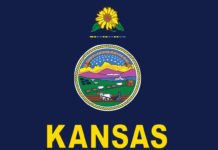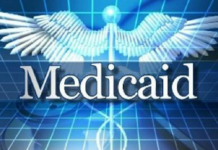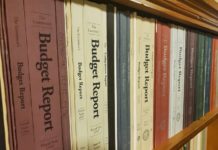Kansas revenue forecasters on Friday offered up a brighter picture of the state’s fiscal health, showing a dramatically smaller deficit than what was projected earlier this year when the coronavirus pandemic forced a shutdown of the state’s economy.
A new consensus revenue forecast released on Friday showed the state running a $363 million surplus in the current fiscal year ending next June and a $152 million deficit for the following fiscal year.
It’s significantly better than the estimated $700 million deficit projected for the current fiscal year and the roughly $1.4 billion estimated for the following year.
“We’re far from out of the woods, but I think this is encouraging news,” said state Budget Director Larry Campbell.
Budget officials cautioned that this is still a time of great uncertainty with so many unknowns about tax, trade and health care policy going forward.
It’s also unknown how the spiraling increase in the number of COVID-19 cases will affect the economy and consequently state budgets.
J.G. Scott, director of Legislative Research, said the estimates made in April were gloomy because they were made at the height of the economic shutdown as the state tried to contain the spread of coronavirus.
“Do we think things are better now? Yes,” Scott said. “Do we think that they’re really good now? I would say, ‘No.'”
The country and the state saw steep jobs losses when the pandemic hit last spring.
The country lost 22 million jobs in March and April while the state suffered a loss of about 44,000 jobs.
So far, the country has regained 51% of those jobs while Kansas has gained back about 49% of those jobs as of September, Scott said.
There are other sectors of the Kansas economy that are still hurting, such as manufacturing, which have been hit disproportionately compared to other industries.
Scott noted that Spirit AeroSystems has laid off 5,000 people since the start of the year before the pandemic hit.
However, he noted that Boeing, one of the company’s largest customers, has already canceled 400 orders with 570 more at risk because of slowdown in the airline industry because of the pandemic.
“We still have problems in south-central Kansas in aerospace. They’re taking it pretty hard,” Scott said. “Anybody that’s in manufacturing is getting hit pretty hard.”
Oil and gas continue to rebound from their low point in the spring but demand continues to lag, Scott said.
The average price for a taxable barrel of Kansas crude is projected at $30 in 2021, up from the $25 a barrel that was estimated in the spring, but still below the $47 a barrel from 2020.
The price of natural gas is expected to climb from $1.35 per 1,000 cubic feet to $2.25 in 2021 and $2.50 in 2022, although production is expected to decline.
Scott said fiscal analysts had more data to work with now than they did at the outset of the pandemic in the spring, when revenues were slashed by about $1.3 billion over two years.
Scott said personal and corporate income taxes came in higher than anticipated, helping to erase the deficits projected earlier this year.
He noted that the projections only include about $370 million in budget allotments that the governor imposed earlier this year.
They do not include another approximately $330 million in allotments that were recommended for the Legislature to consider next year.
The state also was helped by the fact the federal government increased its match rate for Medicaid by about 6.2%, which saved about $166 million in general fund revenue.















